Recent Posts
Signs of a Leaky Roof
8/22/2023 (Permalink)
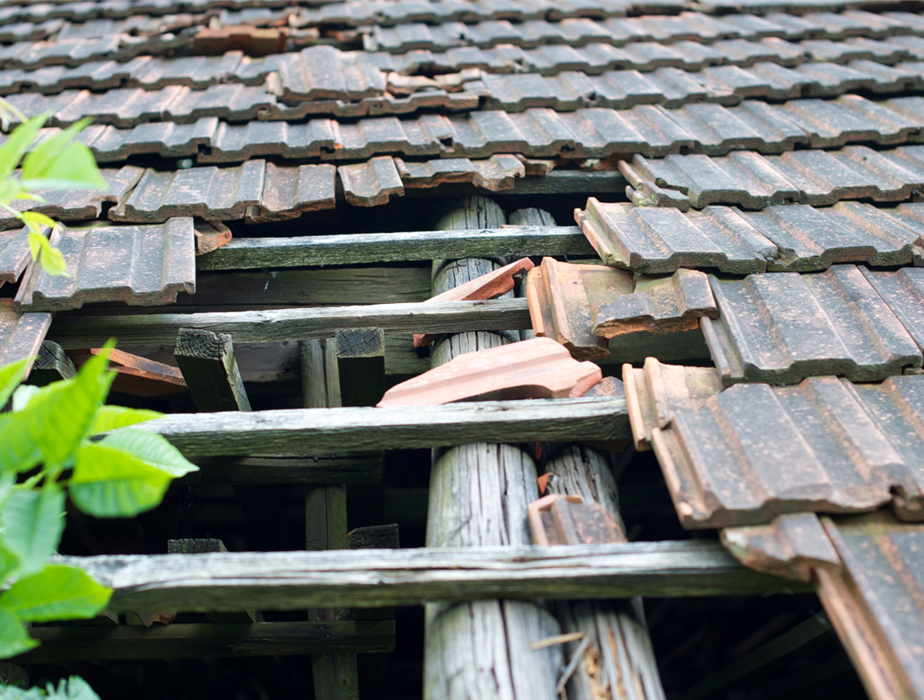 Learn the signs of a leaky roof to prevent indoor damages.
Learn the signs of a leaky roof to prevent indoor damages.
Signs of a Leaky Roof
Water damage can appear unexpectedly. Often, those damages can arise from pre-existing issues that we do not discover until the problem becomes much more extreme. As home and business owners, we do not always realize that our roof is leaking until water damage is present, making a once simple fix now a quite overwhelming dilemma. As water slowly makes its way into a structure through a leak, the risk of mold and structural issues grows as well.
SERVPRO of Norristown provides immediate water damage restoration services for when these circumstances arise. We encourage you to inspect your property for signs of a damaged or leaky roof in order to prevent water damage. Some of the signs to look out for include the following:
Wet walls or ceilings
This is one of the first signs that you have water entering a structure.
Attic issues
Cracks, stains and odd odors can appear due to the presence of water in those areas from the roof.
Broken or missing roof tiles
It is important to inspect your property before and after a storm to ensure no structural elements have been damaged. Broken tiles can allow water to enter your property slowly and often without being recognized for a period of time.
Damaged walls
Bent or cracked walls can mean water has been entering the structure for quite some time.
When your structure begins to show signs of water or mold damage with no prevalent cause, this could be a sign that your roof is damaged. We recommend that you call a certified roof specialist right away to assess the damage and complete any needed repairs.
Other preventative actions you can take include inspecting your property for signs of water collecting around the foundation, rather than away from the structure. This could mean that there is a problem with how water is flowing away from the property through the roof or your drainage system. Gutters and downspouts should be inspected as well as cleared of dirt and debris that can cause a blockage.
SERVPRO of Norristown provides emergency water damage services for when disaster strikes unexpectedly or through an ongoing issue. Our restoration team visits a site immediately in order to assess the damage and determine the best plan of action. Once the restoration process is complete, our professionals are also here to help guide you through the entire process of what to do next in order to prevent further roof or structural damage.
Electrical Fire Safety in Norristown
8/22/2023 (Permalink)
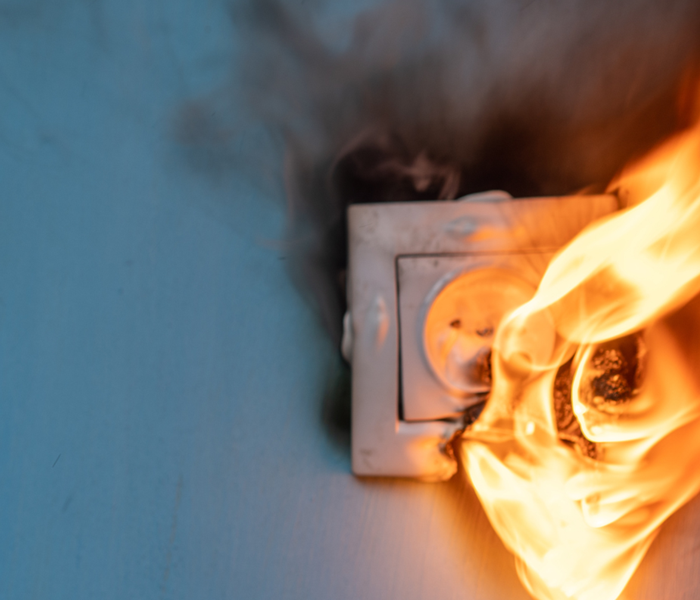 Learn about fire safety to prevent avoidable damages to your home.
Learn about fire safety to prevent avoidable damages to your home.
Electrical Fire Safety
Fire damage can occur at a moment’s notice, and often those damages are unexpected or caused by a minor issue such as an electrical outlet. Electrical fires are one of the leading causes of a house fire. SERVPRO of Norristown recommends that you hire a professional to inspect your electrical systems regularly to ensure that they are working properly. Even a small electrical issue such as a spark can lead to devastating fire damage for your property.
SERVPRO of Norristown can handle any size fire damage event in our local area, but there are several actions you can take in order to help prevent an electrical fire in your home or facility.
- Outlets should not be overused.
- If a cord or outlet is broken, do not use it.
- Cords should not be left under flammable materials such as carpets.
- Ensure your appliances are working properly.
- Your HVAC system and ducts should be clear of dirt and debris that can build up and cause a fire.
- Check for signs of distress on your electrical system. If your lights flicker or your outlets feel hot, call an electrician immediately to perform repairs as well as routine maintenance. A professional can also check your wiring and ensure it has been installed correctly.
Should your property suffer an electrical fire, you should exit the premises immediately. Do not re-enter the building until officials inform you that it is safe to do so.
Once the fire has been extinguished, SERVPRO of Norristown can handle the entire restoration process in order to make any size disaster “Like it never even happened.” Our fire damage restoration professionals will visit the site right away to assess the damage, determine the best plan of action and help guide you throughout the project. We will work with your insurance provider to help speed things along and make the situation as less overwhelming as possible!
Document Restoration Services in Norristown
8/22/2023 (Permalink)
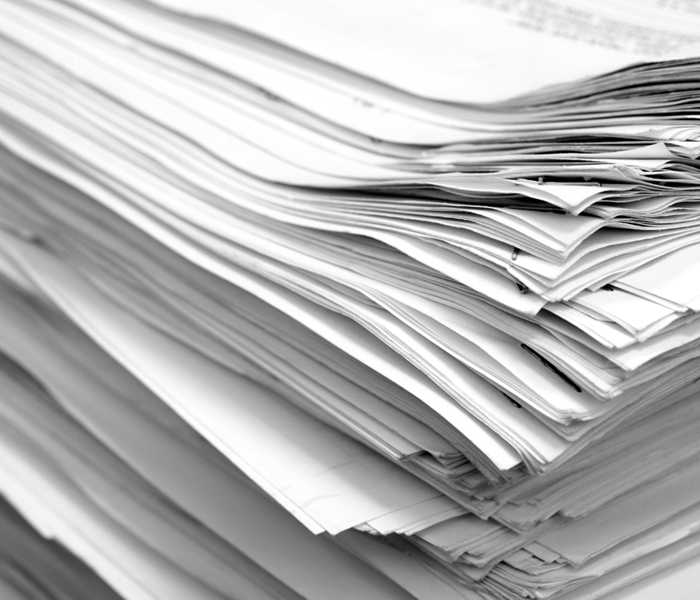 Learn more about our document restoration services.
Learn more about our document restoration services.
Document Restoration
When you suffer a fire or water loss, the damage can be devastating. SERVPRO of Norristown understands that the contents inside your house are what makes it a home, but unfortunately not all items can be restored. When this occurs, our water and fire damage restoration team will both remove the affected content for storage and cleaning as well as dispose of the items that are non-salvageable.
While many items are not able to be saved after water or fire damage, quite a few are able to be treated through our specialty recovery procedures. This includes our document restoration process. When your artwork, books or critical files are affected by smoke or soot, or even minor water damage, SERVPRO of Norristown provides advanced restoration techniques to help fully restore those items to preloss conditions.
Document restoration can be completed using several methods. The most effective way to restore documents affected by water damage is known as vacuum freeze drying. The process of sublimation is used to transform the documents directly from a solid into a vapor. By skipping the liquid stage, less damage is caused while salvaging your sensitive materials.
In instances of sewage or other contaminated water, gamma irradiation is utilized to disinfect the bacteria in the affected documents involved.
When neither of these options will do, we also provide certified destruction services. Our team will completely destroy your documents to ensure your information is safe and secure. We recommend that you backup any important files digitally to avoid this.
SERVPRO of Norristown is proud to provide complete water and fire damage services after a disaster strikes. When you suffer through these types of losses, we work with your insurance provider to get everything back on track for you and your family as quickly as possible. We also can help with electronic restoration services for when your appliances are affected by smoke or water. SERVPRO of Norristown is here to help make every stage of the restoration process as less stressful as we can for our clients in the local area with 24/7 emergency service!
Hurricane Preparedness in Norristown
8/22/2023 (Permalink)
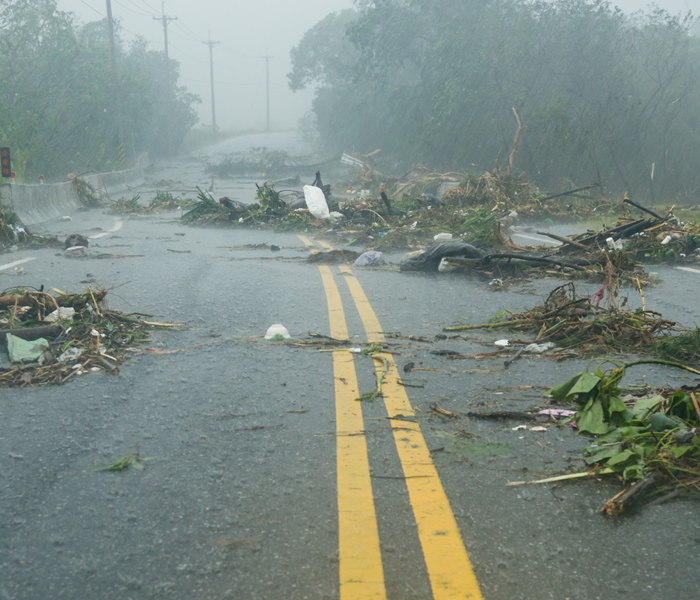 Learn more about hurricane preparedness.
Learn more about hurricane preparedness.
Hurricane Preparedness
Hurricanes can cause significant damage to our area in the form of flooding, power outages and structural damage. Hurricane season runs from June through November, so it is important to remember to be safe and follow the proper safety procedures for when a severe storm strikes!
- Follow your local news sources for updates on the storm’s path and when to evacuate.
- Create a first aid kit and emergency plan for your family or business. It is best to be prepared for severe weather or power outages with items such as flashlights, non-perishable food and bottled water.
- Inspect your property for signs of damage both before and after a storm. Missing roof tiles or loose gutters are two examples of structural components that can cause a larger problem in the event of high winds.
- Be aware of flooding and other risks including downed wires. Do not attempt to drive near these areas.
- To prepare more drastically for hurricane damage, storm shutters can be installed.
- If a storm does occur, stay clear of the windows and move to the lowest possible room.
In the event of storm damage, it is critical to act quickly for both your safety as well as the structural stability of your property. SERVPRO of Norristown provides emergency storm damage services for when hurricanes, tornadoes or thunderstorms hit our area. Our immediate response will limit the downtime for your family or business and help to prevent further damage.
SERVPRO of Norristown is proud to assist those who need us the most in these devastating situations. Should your home or business suffer a storm damage event, we are always “Ready for whatever happens” in Norristown and the surrounding communities!
Protecting your home from water damages.
8/12/2022 (Permalink)
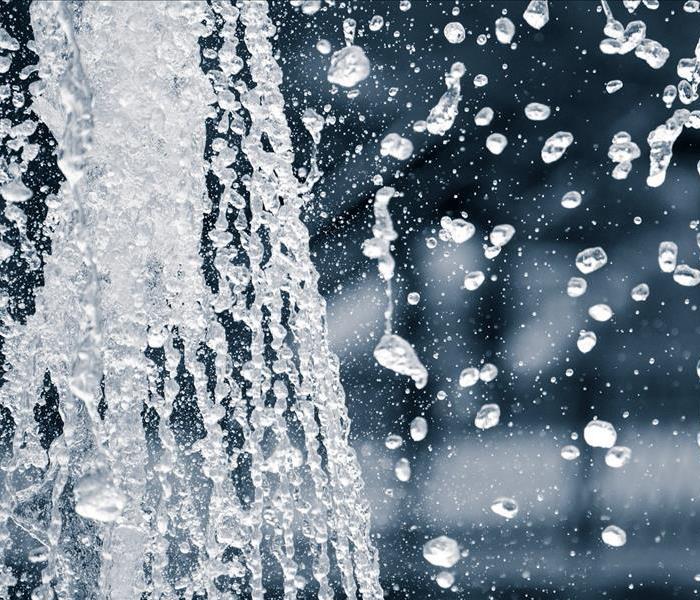 Prevent home water damage.
Prevent home water damage.
Water damage is one of the most common and costly disasters that can befall your home, costing billions of dollars each year. Protect your most important property from water damage with the right insurance coverage and the following practical advice. Water damage and insurance Different types of water damage are covered under different types of policies. Homeowners and renters insurance offers coverage for clogged pipes, wind-driven rain, and damage caused by ice dams on your roof. Generally, water that comes in from the top down—like rain and sprinklers—is covered under a standard homeowner's policy. Some policies cover sewer and drain backups, but many do not; however, you can purchase sewer backup to cover homeowners or renters. Water that flows from the bottom up—for example, an overflowing river—is usually covered by separate flood insurance, which can be purchased through the National Flood Insurance Program (NFIP) and some private insurers. If you live in a flood zone, learn more about suitable coverage. Proper home maintenance is one of the best ways to prevent damage from water disasters. Prevent basement water leaks Close your cellar. Basement water is usually caused by cracks in building foundations or floor slabs. If you notice water seeping after a heavy rain when you have no problems, it could mean that your previously waterproof concrete floors and basements are damaged. Coating weak spots with waterproofing will prevent leaks. Make sure the water drains away from the building. The drain is reinforced because the ground settles so that the water flows towards the building. After a storm, and especially if the soil is saturated, rainwater that flows into the building can pass through any cracks outside the foundation wall. Install the check valve. Although less common than other causes of basement water, sewer backups are messy. Learn more about your sewer responsibilities and install and maintain a check valve that allows sewage to flow but not back up. Maintain and understand your indoor plumbing systems Check equipment hoses and faucets. Get into the habit of checking the hoses that lead to water heaters, dishwashers, washing machines and refrigerators every year. You can also invest in a water leak monitoring and shut-off system that will alert you to potential leakage problems. Replace any hoses with cracks or leaks immediately and replace them all every five to seven years. Control showers and baths. Check the seals and gaskets around showers and tubs to make sure they are watertight and seal if necessary. When you are away on holiday, turn off the water supply to the washing machine and do not leave the house when the washing machine or dishwasher is running. Know the location of the main water shut-off valve in your home. A burst hose or burst pipe can send water into your home. Finding and closing a water line quickly can save stress, money and time. Install an emergency drain valve in your water system. This will protect against increased pressure due to frozen pipes and help prevent pipe bursts. Check water and heating pipes. Look carefully for cracks and leaks and make the necessary repairs immediately. Repair and protect the exterior of your home Close and seal windows to prevent water from escaping. Check your roof for missing, damaged or outdated shingles and make any necessary repairs. Check your drain. Remove debris that may have accumulated in downspouts and rain gutters. Place downspouts to direct water away from the house. Check sprinklers and irrigation systems to make sure they are not causing water damage to the walls and foundation of the house. Turn off and drain outdoor faucets to protect them from frozen pipes. Install gutter guards to prevent gutters from clogging and prevent water from draining away from the house instead of collecting on the roof. Protect your property Store off-season and other large items in waterproof containers, especially in areas with plumbing or moisture-prone areas such as basements and attics. Do not store valuables or memorabilia where there is a risk of water damage. Water and moisture also carry the threat of fungal damage. Store items on floorboards in basements. In case of water seepage or sewer backup, they're less likely to get damaged. Keep an up-to-date home inventory. Having a comprehensive list of your possessions will save time, trouble, and stress in case of loss from water damage.
Pros of Outdoor Faucet Covers
8/1/2022 (Permalink)
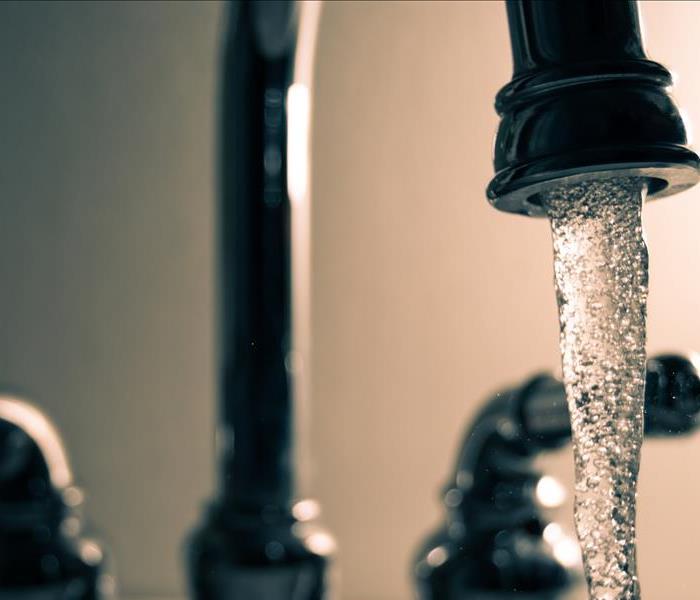 Faucet with running water.
Faucet with running water.
Why use outdoor battery covers? Styrofoam covers for your outdoor batteries may not look pretty, but they can be very useful. When freezing temperatures arrive and a long, cold winter comes with them, Styrofoam battery covers can mean the difference between a smooth spring and frozen pipes flooding your home. Your pipe needs protection You don't have to be in an area with the worst winters. The need may only be a dip below the freezing point. A night with single digit temperatures can quickly freeze your pipes inside, causing them to expand and burst. While replacing a pipe in itself isn't a big deal, water damage caused by a burst pipe can spell disaster. Putting on the polystyrene battery covers only takes a few minutes of your time.
Why Choose SERVPRO of Norristown?
8/1/2022 (Permalink)
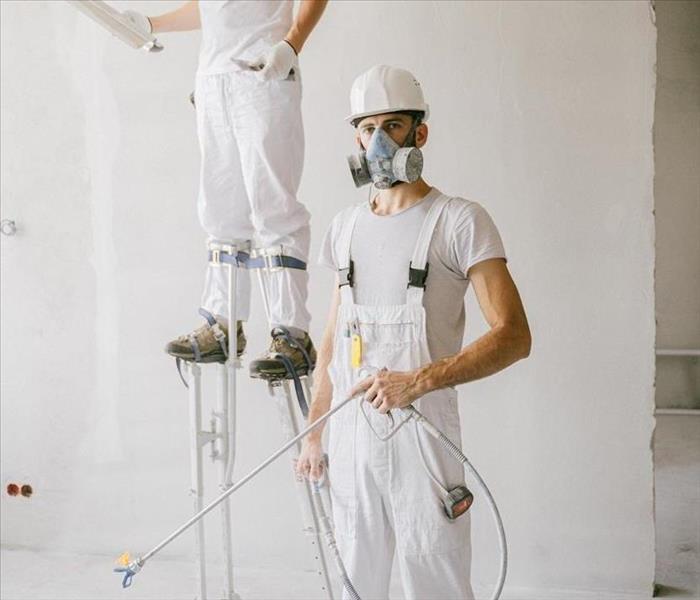 Trusted damage mitigation experts.
Trusted damage mitigation experts.
At SERVPRO of Norristown, we care about our customers. We're an emergency restoration company, so we know we need to get to work fast. Minutes can turn small damage into very dangerous structural damage. We are open 24 hours a day, 7 days a week and in the event of an emergency we provide the customer with someone to call at any time of the day. This is a huge advantage as many other restoration companies are not open 24/7. We are a trusted franchise with a 4.6 star rating online, and we strive to live up to that rating on even the smallest jobs. After work, we want reviews on Google, Facebook or Yelp. We appreciate that very much! SERVPRO of Norristown is here to help.
Importance of Prepping for Winter Storms
8/1/2022 (Permalink)
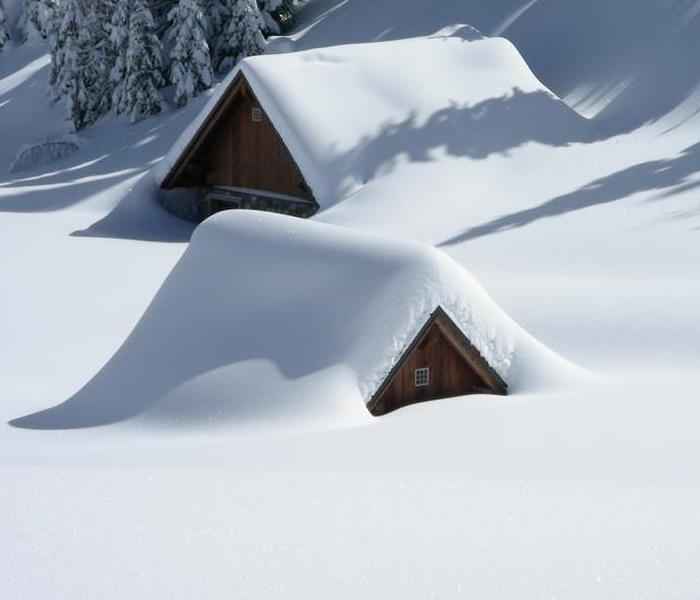 Extreme winter storm.
Extreme winter storm.
Talk to your family about what to do if a winter storm watch or warning is issued. Talking about winter storms in advance can help reduce anxiety, especially for children. Get your car cooled down before the winter storm season to reduce the chances of getting stuck in cold weather. Have a mechanic check the battery, antifreeze, windshield wipers and washers, ignition system, thermostat, lights, flashing hazard lights, exhaust system, heater, brakes, defroster, and oil. Fit good winter tires with enough tread. All-weather radials are usually sufficient, but some jurisdictions require vehicles with chains or studded winter tires. Keep in your car: - A windshield scraper and a small broom - A small bag of sand to create traction under the tires and a set of snow chains as a traction pad - Fits a container that won't get wet - Bright colored (preferably red) fabric to tie around the antenna - Kit emergency power, including warm clothing. Keep your car's tank full so you can escape quickly in an emergency and your fuel lines don't freeze. Keep a supply of non-biodegradable cat litter to keep sidewalks and steps from slipping. Service snow removal equipment for the winter storm season and keep it in good condition. Have a warm coat, gloves or mittens, a hat, waterproof boots and other blankets and warm clothing for each household member.
How to cook with caution this summer.
8/1/2022 (Permalink)
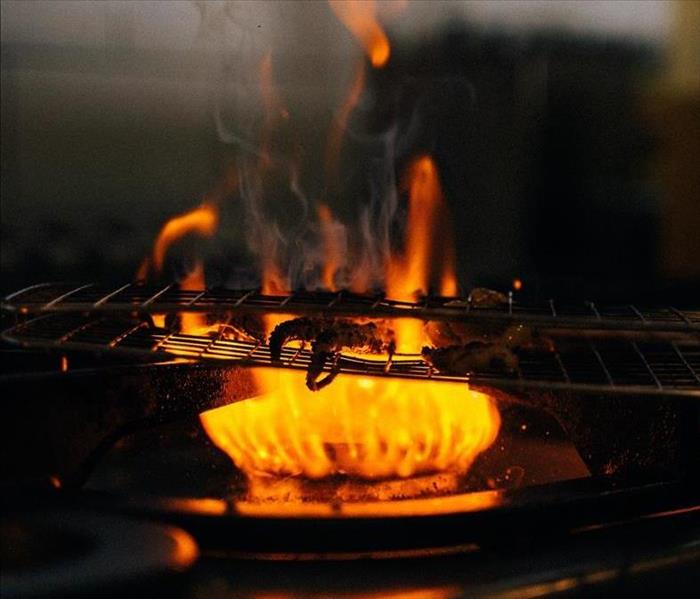 How to cook safely with fire.
How to cook safely with fire.
Be alerted. Do not cook if you are drowsy or have consumed alcohol. This can create dangerous situations. Do not use the stove or heater if you are under the influence. Stay in the kitchen when frying, boiling, grilling or cooking food. Always turn off the stove when you have to leave the kitchen, no matter how quickly. If you cook, boil or grill food, check it regularly, stay home while it's cooking, or use a timer so you don't forget. Make sure your kitchen is free of clutter and that there are no loose objects near the stove. This reduces the possibility of something catching fire. If you have a small oil/cooking fire and decide to fight the fire… On the stove, turn off the flame by removing the lid from the pan and turning off the burner. Leave the pan covered until completely cool. When the fire is in the oven, turn off the oven and close the door. If you have doubts about putting out a small fire... Get out of the house! Remember to close the door behind you when you leave to help with the fire. Call 9-1-1 or your local emergency number away from home.
How to identify different types of fires.
8/1/2022 (Permalink)
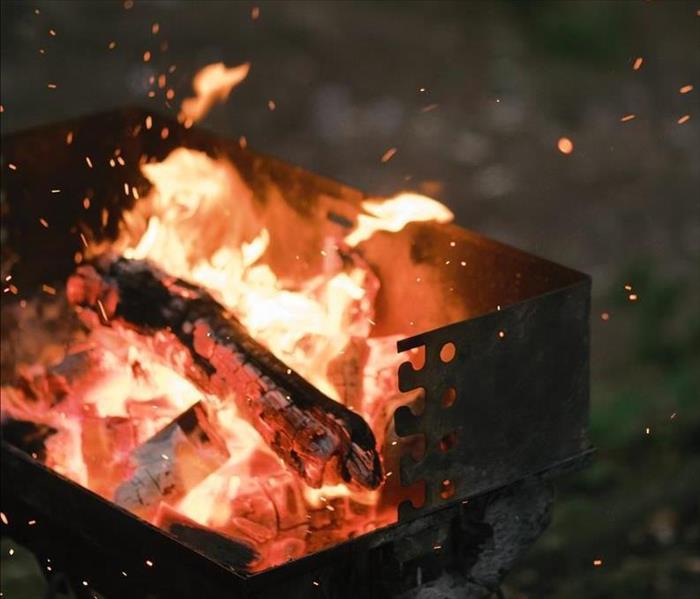 Awareness of different types of fires.
Awareness of different types of fires.
Synthetic: A synthetic fire is caused by burning petroleum substances. These materials are plastics and fabrics. Some examples of these materials include furniture, curtains, electronics, and carpet fibers. Thick black smoke is often seen when these products are burned. If a synthetic fire breaks out in your home, the best way to clean it up is to vacuum the surface. Finish the cleaning process with a dry chemical sponge. Protein: Protein fires can burn meat products. These fires usually leave a yellowish-brown residue. Cleaning these fires can be very difficult due to their greasy nature. It is best to use the correct cleaning chemicals when removing smoke residue. Natural: A natural fire is caused by the burning of wood or paper dust. These fires produce gray-black smoke and are among the easiest to clean. Use a vacuum cleaner with a brush and then use a dry chemical sponge to clean these fires. Now that you know the different types of fires you may encounter and how to recognize them. You can use the good cleaning methods mentioned above.






 24/7 Emergency Service
24/7 Emergency Service









